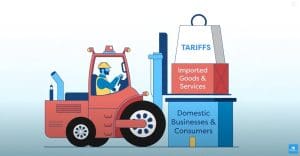

TaxEDU is designed as a simplified resource to advance tax policy education, discussion, and understanding in classrooms, living rooms, and government chambers.
TaxEDU gives teachers the tools to make students better citizens, taxpayers a vocabulary to see through the rhetoric, lawmakers crash courses to write smarter laws, and videos for anyone who wants to boost their tax knowledge on the go.

Featured Videos
Principles of Sound Tax Policy
As a nonpartisan, educational organization, the Tax Foundation has earned a reputation for independence and credibility. All Tax Foundation research is guided by the principles of sound tax policy—simplicity, transparency, neutrality, and stability—which should serve as touchstones for policymakers and taxpayers everywhere.






